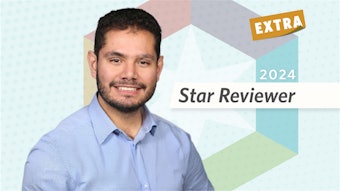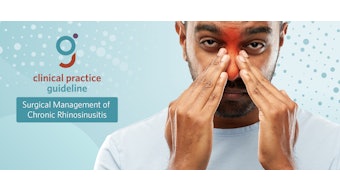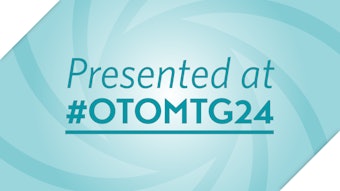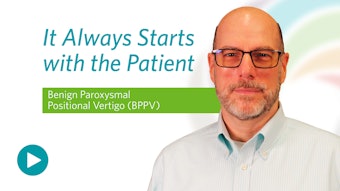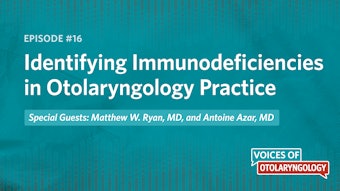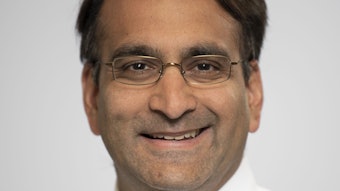Behind the Peer Review: A Conversation with Star Reviewer Patrick Tassone, MD
Dr. Tassone reveals how his background in head and neck cancer research and academic medicine helped him excel as a peer reviewer while balancing clinical and research responsibilities.
 Patrick Tassone, MD
Patrick Tassone, MD
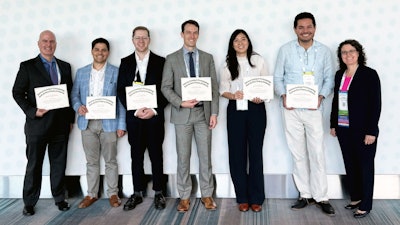 2024 Star Reviewers (Left to Right): Richard K. McHugh, MD, PhD, Mark A. Arnold, MD, Conner J. Massey, MD, Patrick T. Tassone, MD, Janet S. Choi, MD, MPH, Marco A. Figueroa Morales, MD, MSc, MEd. Not pictured: Jakob L. Fischer, MD, Christopher W. Noel, MD, PhD, and Ahmad R. Sedaghat, MD, PhD (Star Reviewer Emeritus)
2024 Star Reviewers (Left to Right): Richard K. McHugh, MD, PhD, Mark A. Arnold, MD, Conner J. Massey, MD, Patrick T. Tassone, MD, Janet S. Choi, MD, MPH, Marco A. Figueroa Morales, MD, MSc, MEd. Not pictured: Jakob L. Fischer, MD, Christopher W. Noel, MD, PhD, and Ahmad R. Sedaghat, MD, PhD (Star Reviewer Emeritus)
What is your area of research focus within otolaryngology-head and neck surgery?
I had an early interest in clinical research during medical school at Ohio State and into residency at Thomas Jefferson University. While I was a resident, I had excellent mentorship to expand my research interests into basic and translational science in head and neck cancer. In particular, I worked with clinician-scientists investigating metabolism in the tumor microenvironment, a line of inquiry that allowed me to apply for and receive a CORE funding grant through the Academy during residency. Since starting in my academic practice at the University of Missouri, I have maintained an interest in clinical outcomes research as well as collaborations with scientists outside of otolaryngology on translation research.
Tell us about your path to becoming a Star Reviewer.
I started peer reviewing early on to a small degree, but really began in earnest once I was working as faculty here at the University of Missouri. One of my senior partners connected me to the editorial office at the OTO Journals, and I started reviewing any paper they would send my way. I earned a master's degree in academic medicine a couple of years into practice. The coursework associated with this degree helped make me a much better reviewer as I learned even more about study design, data analysis, and interpretation. I also read a lot of papers.
How do you make time for high-quality reviews with clinical responsibilities and other demands?
We’re all pressed for time, and time management is a topic all its own. I have decided to make reviews a priority in my work and prioritizing it has made the most difference. I can’t always review a paper on the same day each week, but I almost always have time to finish a review during normal working hours if I look thoughtfully for an opportunity. Putting a review at or near the top of my list of to-dos has allowed me to review a good volume of papers without having to resort to (too many) nights and weekends for this type of work.
What wisdom would you share with the next generation of aspiring peer reviewers?
First, read “How to Review Journal Manuscripts” by [former Editor-in-Chief] Richard Rosenfeld, MD, MPH, published in Otolaryngology–Head and Neck Surgery.1 Second, read a lot of published articles from peer-reviewed journals in your areas of interest. Third, spend some dedicated time reading about internal and external validity; beyond just their definitions, dig into what these really mean because they are the heart and soul of any research publication. Fourth, if you are a resident, apply to the OTO Journals’ Resident Reviewer Development Program**; I have seen tremendous growth by residents through this program, and I had the same opportunity when I was in training.
Tell us about one of your own publications you are particularly proud of.
My co-authors and I examined the National Cancer Database to identify factors associated with failure to receive adjuvant therapy after oral cavity cancer resection in a 2023 publication in Otolaryngology–Head and Neck Surgery.2 When patients don’t receive the adjuvant therapy they should, it has serious negative effects on oncologic outcomes, and I believe much of the failure to receive therapy is preventable. This paper, and others like it, has inspired an ongoing investigation at our cancer center into patient barriers to adjuvant therapy; I hope to turn this line of work into a chance at meaningful intervention for head and neck cancer patients who need adjuvant therapy after surgery.
*The Star Reviewer recognition is awarded annually to the top reviewers across the OTO Journals; Star Reviewers must meet criteria for both the volume and excellence of their reviews. To learn more about the benefits of becoming a peer reviewer for the OTO Journals, visit Why Peer Review for the OTO Journals.
**The Resident Reviewer Development Program is not open for applicants at this time, but interested residents can learn more about the program here.
Related Articles in the Bulletin
Become a Peer Reviewer for the OTO Journals
Behind the Peer Review: A Conversation with Star Reviewer Janet Choi, MD
References
- Rosenfeld, RM. (2010), How to review journal manuscripts. Otolaryngology–Head and Neck Surgery, 142: 472-486. https://doi.org/10.1016/j.otohns.2010.02.010
- Tassone, P, Topf, MC, Dooley, L, Galloway, T, Biedermann, G and Trendle, M. (2023), Going Off Guidelines: An NCDB Analysis of Missed Adjuvant Therapy Among Surgically Treated Oral Cavity Cancer. Otolaryngol Head Neck Surg, 168: 1420-1432. https://doi.org/10.1002/ohn.205


